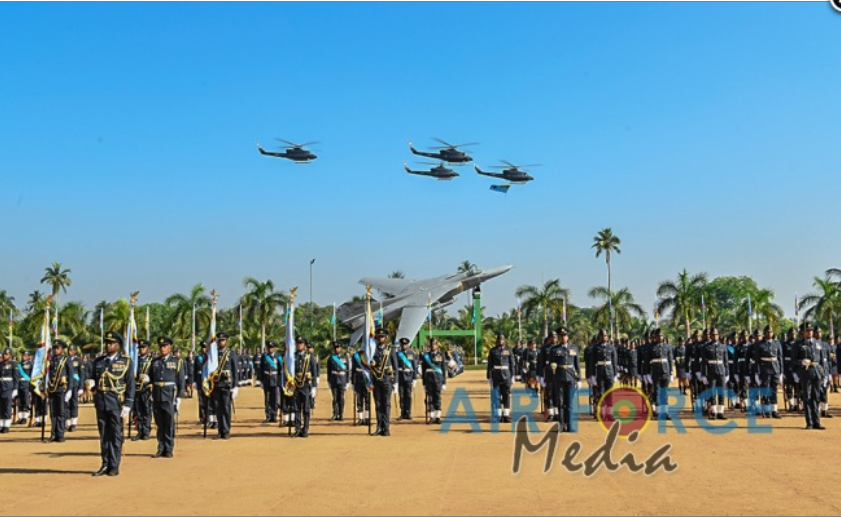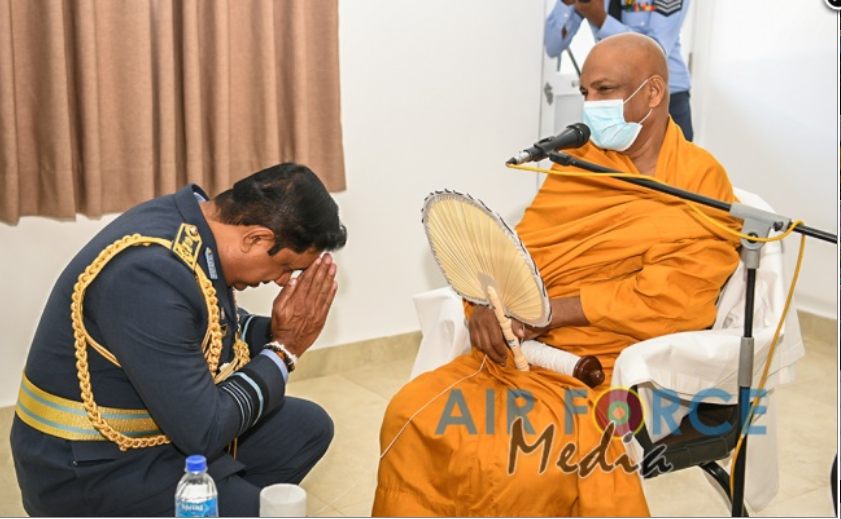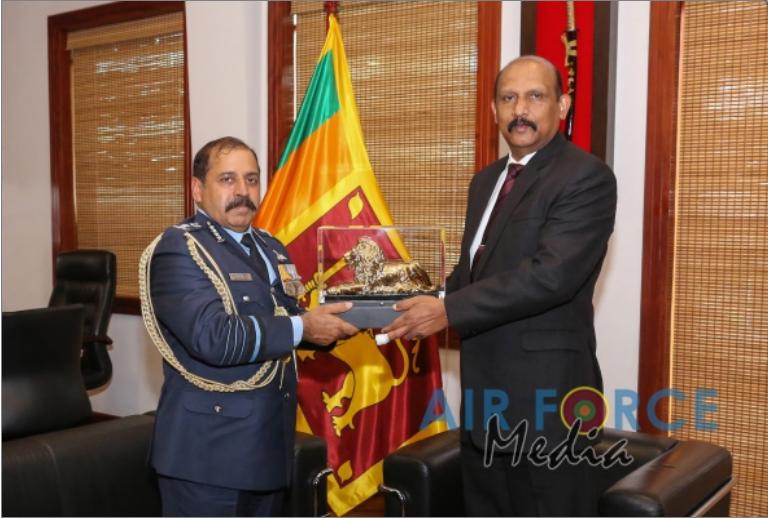
The Sri Lankan Air force (SLAF) marked its 70th anniversary with a joint air display with the Indian Air force (IAF) in Colombo which was attended by accused war criminal Gotabaya Rajapaksa and the Chief of the Indian Air force Rakesh Kumar Singh Bhadauria, as jet staged numerous flyovers and joint manoeuvres over the Katunayake Airbase following preparatory flyovers over the Galle Face Green.

The commemorations began with the Sri Lankan Air force Commander, Sudarshana Pathirana conducting a Buddhist religious ceremony led by members of the Buddhist clergy. Following this, the main air parade was held at the Katunayake Airbase.
Love&peace 4m #India 2 #lka. @IAF_MCC aerobatic helicopter team performed a breathtaking display in presence of @GotabayaR &other dignitaries to mark 70 years of SLAF.@IAF_MCC Chief flew in on d occasion.
Proud of @IAF_MCC and friendly ties between #ArmedForces of #India & #lka. pic.twitter.com/jnsLagtggW— India in Sri Lanka (@IndiainSL) March 3, 2021
A total of 14 Indian aircraft alongside 24 from the Sri Lankan Air force participated in the event. A manoeuvre conducted by the Indian aerobatic helicopter teamed formed a ‘heart’ with the Indian high commission’s office tweeting it as a reference for the ‘love and peace’ between the two countries.
All branches of Sri Lanka’s military stand accused of committing war crimes including the SLAF, which has been credibly accused of using cluster munitions and bombing civilian targets. Numerous sorties flown saw the indiscriminate bombing of Tamil civilians and led to the death of tens of thousands towards the end of the armed conflict.

The Chief of the Indian Airforce flew in to observe the event and met with another accused war criminal, defence secretary Kamal Gunaratne. Gunaratne was commander of the Sri Lankan army’s infamous 53 Division during the 2009 massacres. The unit he headed is accused of numerous abuses, including sexual violence, summary executions and the disappearance of those who surrendered to the military.
‘They bombed my school’
Successive Sri Lankan governments have used the SLAF to conduct numerous massacres.
The Rajapaksa regime allegedly profited from the infamous ‘MiG deal’ and several aircraft were used to drop internationally banned cluster munitions and other incendiary bombs on civilian targets, with reports of white phosphorous being used in the ‘no-fire zones’. The same regime also presided over the Sencholai massacre which saw 54 schoolgirls killed by the Sri Lankan air force. Four Sri Lankan jets flew over the Vanni and dropped sixteen bombs over the Sencholai children’s home for orphans, killing 53 school girls and 3 teachers. The children’s home had been designated a humanitarian zone and its GPS coordinates had been passed to the Sri Lankan military via the UN children’s agency, UNICEF, and the International Committee for the Red Cross (ICRC).
![]()
Amongst the many massacres carried out by the SLAF in previous years were the 1995 Navaly church bombing and the 1995 Nargarkovil school bombing.

On September 22, 1995, SLAF aircraft bombed the Nagarkovil-Maha Vidyalayam schoolyard crammed with 750 children on their lunch break. Killing more than 30 – of whom 12 were six or seven-year-olds – and injuring 150 others, 40 seriously. The overall death toll from the raids reached 71. The bombing occurred just hours after the Sri Lankan government imposed press censorship on the reporting of military events.
On July 9, 1995, the SLAF bombed the St Peter’s church in Navaly and the nearby Sri Kathirgama Murugan Kovil, which were both sheltering displaced Tamils from army bombardment after the Sri Lankan military had told civilians to seek shelter in churches and temples. A total of thirteen bombs were dropped killing 147 civilians on the spot with many more succumbing to injuries later.
‘They bombed my school’ - An eyewitness account of the Nagarkovil massacre
‘Bombs rolling in the air’ - Remembering the Navaly church massacre
Read more at the Sri Lankan Airforce website.
We need your support
Sri Lanka is one of the most dangerous places in the world to be a journalist. Tamil journalists are particularly at threat, with at least 41 media workers known to have been killed by the Sri Lankan state or its paramilitaries during and after the armed conflict.
Despite the risks, our team on the ground remain committed to providing detailed and accurate reporting of developments in the Tamil homeland, across the island and around the world, as well as providing expert analysis and insight from the Tamil point of view
We need your support in keeping our journalism going. Support our work today.
For more ways to donate visit https://donate.tamilguardian.com.

